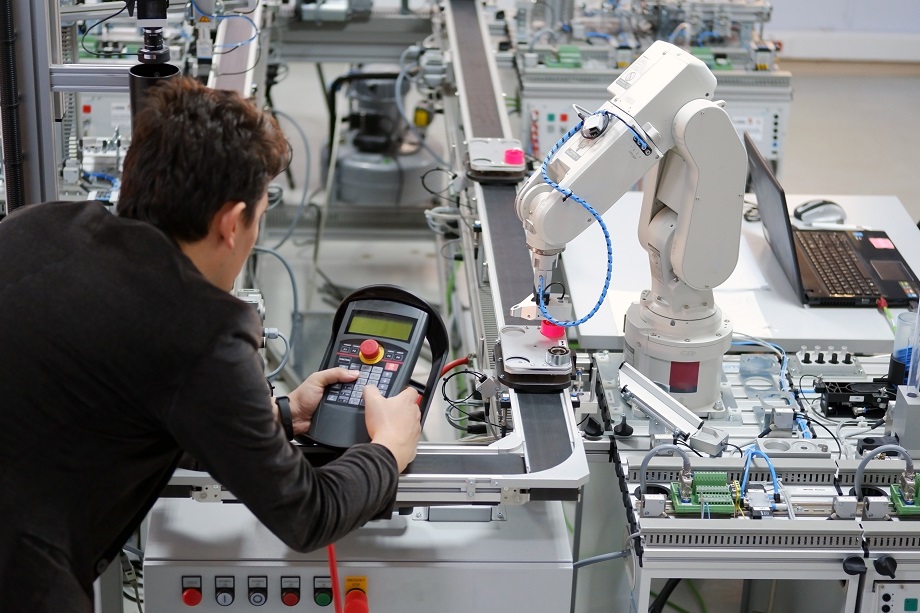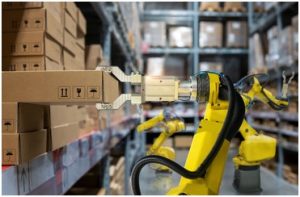
Today’s automation trend is about applying all relevant technologies to automate business processes as much as possible. Going full-force is called hyper-automation with the goal of becoming more efficient and effective. One of the choices to accomplish these goals is called robotic process automation (RPA).
The capabilities of automation are virtually endless for the future of most businesses and industries. The long-term success of factories and plants depends upon becoming more productive, delivering higher quality products, and remaining competitive.
Companies regularly study the automation process technologies of their competitors to gain greater insights. Autonomous enterprises will be powered by artificial intelligence (AI) and machine learning (ML). We need to understand how they will impact businesses as well as employees.
Autonomous Enterprises Will Be Powered By AI And ML
We can see how AI and ML are changing the world of business globally. From factories to assembly plants to warehouses, automation increases productivity, quality, and profits.
Here are some specific things AI and ML are doing now:
- Actions from network design to manufacturing
- Augment human decision-making
- Make repetitive tasks without human hands
- Conduct many dirty and dangerous jobs for humans
- Examine data and identify underlying trends
- Automates data analytics
Machine learning methods enable artificial intelligence to autonomously carry plans, processing, and production to the extent they are programmed. While autonomy is enabled by AI, not all uses of AI are autonomous. As an example, AI is not intended to replace all human decision-making.
RPA Impact On Business And Industry Productivity
 Robotic process automation (RPA) is revolutionizing business and industry productivity. It is a software technology that makes it easier to build, deploy, and manage software robots. These robots emulate human actions and activities that interact with digital systems and other software. These examples help explain what RPA is capable of:
Robotic process automation (RPA) is revolutionizing business and industry productivity. It is a software technology that makes it easier to build, deploy, and manage software robots. These robots emulate human actions and activities that interact with digital systems and other software. These examples help explain what RPA is capable of:
- Comprehend what is on a screen
- Navigate systems
- Complete keystrokes
- Identify and extract data
- Perform defined actions
Software robots can carry out these tasks faster and more consistently than humans and they do not take breaks or get sick. RPAs also streamline workflows, increase profits, and increase employee satisfaction and engagement. They remove mundane tasks from workers and can be rapidly implemented to accelerate digital processes.
| “The capabilities of automation are virtually endless for the future of most businesses and industries.” |
RPA Impact On Employees
Robotic process automation (RPA) is a two-sided coin for both businesses and their employees. Some workers will be laid off from their jobs because of it and others may resist the change. At the same time, new jobs will be created, and existing jobs improved. More than 50% of companies surveyed in a recent questionnaire report better employee engagement and 86% reported increased efficiency. Additional impacts found are:
- Employees can focus on more meaningful tasks
- Helps employees become more effective
- Improved interaction with customers
- Helps keep workers more engaged and happy
Acts as a mass empowerment tool and job creator
We are all to some extent, resistant to change at work. With the right introduction and training for RPAs, employees welcome the technology to take them away from ‘busy’ work. They can drop the mundane and move on to more important parts of their jobs.
Cost To Implement AI, ML, And RPA
 The general cost to implement these tools varies from $5,000 to $300,000 for several reasons. Using custom robotic process automation tools costs much more than standardized tools. Other reasons include the number and complexity of intelligent software agents, bot configuration requirements, and maintenance efforts.
The general cost to implement these tools varies from $5,000 to $300,000 for several reasons. Using custom robotic process automation tools costs much more than standardized tools. Other reasons include the number and complexity of intelligent software agents, bot configuration requirements, and maintenance efforts.
So, is it worth it to spend this much money? Studies have shown that office employees spend about 69 days per year on administrative and mundane tasks. The annual cost to businesses of this lost productivity is $2.87 trillion in 2022. You can see from this example and there are others that incorporating AI and RPA in office work are worth it.
Basic RPA Training Begins With An Associate Degree
Where will you get the training and education to work with AI, ML, and RPA? The answer is attending ITI Technical College and graduating from our recognized program. By earning an Associate of Occupational Studies (AOS) Degree in the Automation and Electric Systems Technology Program, you will prepare yourself for a good entry-level position.
Take the time to investigate what we have to offer and talk to one of our admissions representatives. It will be well worth your time to explore this opportunity for a better life. Call us today at (877) 591-1070 for more information about all our programs!
For more information about graduation rates, the median debt of students who completed the program, and other important information, please visit our website: https://www.iticollege.edu/disclosures




